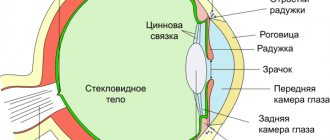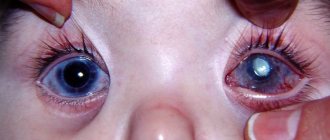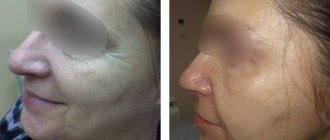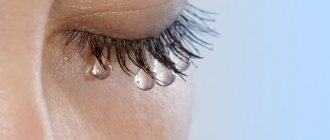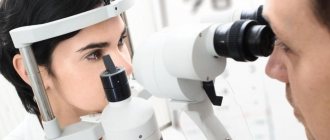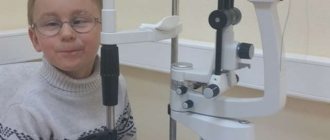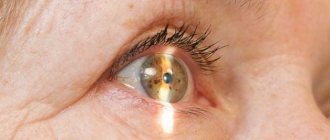Wrinkles around the eyes, dark circles, and swelling begin to show age early. Even young girls are subject to similar changes. Over the years, the picture is complemented by ptosis and hernia formations. You often have to think about correcting problems at a young age. Cosmetologists do not advise immediately resorting to drastic methods. Injection blepharoplasty will help you begin the fight against aging in the eyelid area. The introduction of special preparations will tighten the skin, eliminate signs of fatigue, and restore youth to the look. It is permissible to resort to this method more than once, postponing the classic surgical intervention.
Indications for use
Turn to non-surgical treatment through injection correction in the case of:
- long-term signs of fatigue, stress, impaired metabolism (dark circles, bags);
- the appearance of the first wrinkles (crow’s feet, “mesh” on the lower eyelid);
- excessive thinning of the skin;
- drooping eyelids;
- strong expression of the nasolacrimal groove;
- decrease in turgor.
Upper eyelid blepharoplasty: “Madonna Lift” technique
Due to a genetic tendency or age-related changes in the skin, characteristic “overhangs” often form above and below the eyes, making the look “tired.” A unique cosmetic surgery - blepharoplasty - can restore youth to the face:
- upper eyelid (upper);
- lower eyelid (lower);
- circular (both eyelids).
Upper eyelid surgery, performed using the latest gentle technologies, allows you to get rid of an unpleasant aesthetic defect, literally tightening wrinkles and returning the eyes to their natural appearance. Blepharoplasty of the upper eyelids using a laser allows you to remove tissue hanging on the eyelash row:
- fast;
- without pain;
- without complications;
- no scars.
The low-traumatic procedure is quite effective and, unlike other methods, guarantees long-term maintenance of the achieved result.
Efficiency of the procedure
The intervention helps make the eyes more aesthetically pleasing and younger. Manipulations restore freshness to the look. Injection blepharoplasty is recognized as a worthy alternative to invasive intervention for young and middle-aged patients. For older women with pronounced changes, non-surgical correction will not help eliminate existing problems. Only classic plastic surgery will help.
It is permissible to perform injection lifting when indicated. Manipulation is very popular among women 25–45 years old.
Attention! Cosmetologists do not recommend resorting to injections without reason. It is advisable to perform injections no earlier than 30–35 years of age.
Features of preparation
The intervention does not require complex preparations. A mandatory stage of injection blepharoplasty is a preliminary visit to a cosmetologist. The doctor gets to know the patient, examines him, and asks many questions.
The conversation helps to clarify possible contraindications. The doctor compares the information received with the client’s wishes. Offers options for solving the problem.
The cosmetologist may prescribe additional tests. In doubtful cases, the opinion of other highly specialized doctors is required: ophthalmologist, endocrinologist, dermatologist.
The cosmetologist selects the appropriate drug and calculates the required amount of the substance. The data depends on the thickness and degree of damage to the skin. The cost of the procedure depends on the choice. The doctor announces the estimated cost and schedules a day for injections.
At home, a week before the procedure, avoid taking medications that affect blood quality. It is advisable to lead a healthy lifestyle, adhere to a proper diet, and not eat foods that cause thirst. 1–2 days before the intended injections, completely abstain from alcohol and medications. On the eve of visiting a cosmetologist, limit your fluid intake, and it is advisable to quit smoking.
During the preparation period, additional skin care procedures are excluded. They refuse peeling and hardware interventions. The skin must be thoroughly cleansed using mild detergents, nourished, and moisturized with the usual cream. It is not recommended to use products with a lifting effect.
Carrying out the procedure
The session begins with cleansing the skin. The doctor removes any remaining cosmetics and uses an antiseptic. Injection blepharoplasty does not require mandatory anesthesia. Anesthetics are used at the request of the patient. Cosmetologists use local anesthetics (EMLA cream).
The drugs are administered with a thin needle. The doctor punctures the lines that form the “cushion” that supports the skin. The cosmetologist tries to distribute the drug evenly. To do this, after administering the substance, the doctor additionally massages the puncture sites.
Upon completion of the manipulations, the cosmetologist invites the patient to relax and observes the condition for 15–20 minutes. The absence of unexpected reactions indicates the possibility of returning to everyday activities. The patient can go to work, but it is better to rest while waiting for the puncture sites to completely heal.
The procedure lasts 30–40 minutes. Side effects rarely occur if the cosmetologist is highly qualified. To prevent unwanted consequences, it is recommended to carefully choose a clinic or doctor. Reviews from friends will help you decide. Showing interest in licenses, certificates, and the actions of the cosmetologist during the session will help achieve the desired result.
Healing period
Injection blepharoplasty can be performed without interrupting your normal life. After injections, slight redness is noticeable in the affected areas. Sometimes swelling and bruising occur. It is not recommended to mask such manifestations. It is advisable to stop using decorative cosmetics for 2-3 days. This will help speed up healing and prevent infection of the puncture sites. For the same purpose, it is recommended not to touch (scratch, rub) your eyes.
Until the wounds are completely healed, it is advisable to ensure that the skin is treated with care. You need to wash your face carefully, using mild cleansers. It is recommended to additionally treat puncture sites with an antiseptic.
For 3–7 days, give up:
- baths, saunas, solariums;
- physical activity;
- complex makeup;
- massage the corrected area.
You will have to protect your face from direct sunlight for at least a month. It is advisable to protect the body from any inflammatory processes during the recovery period. It is permissible to additionally take vitamins and immunomodulatory complexes.
Note! The speed of onset of the effect depends on the problem being solved and the drug used. Usually after the first session improvements are noticeable.
Injection blepharoplasty is often carried out in courses of 4–10 treatments with 1 session per week. The result lasts 1–3 years. It is recommended to repeat the administration of the drug no earlier than after 1.5–2 years. Often injection techniques are alternated with hardware correction.
Advantages of laser blepharoplasty of the upper eyelid
- Coagulation of blood vessels with a laser wave, resulting in rapid tissue healing.
- No noticeable scar (the incision is made in the natural crease of the eyelid).
- Long-lasting lifting effect (depending on the patient’s age and skin type – up to 10 years).
- Short rehabilitation period.
- No risk of complications, etc.
The result of laser lifting of the upper eyelids is noticeable literally immediately, but the final aesthetic effect will be visible a month after the operation, after the traces of surgical intervention have disappeared and the dermis at the incision site has been strengthened.
For 3-4 weeks after upper eyelid blepharoplasty, you should avoid excessive physical activity, which causes an increase in blood pressure. Natural cosmetics that do not contain aggressive components are allowed for 10-14 days (according to individual doctor’s recommendations). Contact optics (lenses) are allowed 2 weeks after the procedure (if there are no contraindications).
Types of fillers
Injection blepharoplasty is performed on both the lower and upper eyelids. The injected drugs help eliminate wrinkles, launch natural regeneration processes, and eliminate excess subcutaneous fat.
The result is to “open” the eyes, smooth out the skin texture, and achieve an aesthetic appearance.
To perform contour injection blepharoplasty, fillers based on hyaluronic acid are used, which, evenly distributed, smoothes the surface of the skin and has a positive effect on the course of internal processes.
The tissues are saturated with moisture and the production of elastin and collagen is stimulated. In addition to hyaluronic acid, bioremediation mesococktails are used to achieve similar goals. Popular substances in this group are:
- Juvederm;
- HAfiller;
- style;
- Glytone;
- Teosyal;
- Dermaheal eyebag solutions;
- Meso Wharton P199;
- Meso Xanthin F199.
Another group of drugs is aimed at combating excess tissue that contributes to excessive drooping of the eyelids, the formation of bags, edema, and hernias. Problems are solved using lipolysis. They use drugs based on natural ingredients that trigger the process of breaking down adipose tissue and normalizing metabolic processes. Popular substances in this group are:
- Lipostabil;
- MRKh complex;
- Caregen;
- Aminomix.
Important! The choice of the drug is made by a cosmetologist. A professional assessment of external signs helps to correctly determine the means of control.
Upper eyelid blepharoplasty: indications and limitations
An upper eyelid lift operation is preceded by a mandatory consultation with a clinic surgeon, during which the doctor examines the temporal region, forehead, eyelids, eyebrows and other adjacent areas of the face. An important aspect is to establish the cause of sagging skin (for example, accumulation of excessive tissue, drooping eyebrow arches, etc.), and it is mandatory to undergo outpatient tests (blood, urine). During the preliminary examination, the extent of surgical intervention and the predictable aesthetic result are also determined. Upper eyelid blepharoplasty is indicated for:
- obvious overhang of fabrics;
- drooping outer corner of the eyes;
- formation of a deep network of wrinkles;
- congenital or acquired defects and others.
Temporary restrictions, as well as complete medical contraindications for upper eyelid surgery, are:
- glaucoma (high pressure inside the eyes);
- diabetes;
- low blood clotting;
- diagnosed oncology;
- acute diseases;
- exacerbation of chronic ailments;
- arterial hypertension;
- wounds and tissue damage in the eye area (cuts, hematomas, etc.).
Contraindications
You will have to refuse injections if:
- individual intolerance to the components of the product used;
- hemophilia, problems with the heart, blood vessels;
- the presence of endocrine diseases;
- recurrence of herpes;
- pregnancy, breastfeeding;
- oncology, autoimmune disorders.
The procedure is not performed for facial skin problems. Intervention is tolerated in the acute course of chronic or systemic diseases. Additional consultation with a doctor will be required in case of serious disorders of the liver or kidneys.
Consequences
Injection blepharoplasty rarely has negative side effects. Redness of the affected areas is considered a normal reaction of the body. In some cases, the following occurs:
- swelling;
- hematomas;
- pain at injection sites;
- tearfulness.
The phenomena go away on their own and do not require additional actions. If necessary, symptoms can be alleviated with cold compresses. In rare cases, inflammation of the injection sites occurs. This is a consequence of violation of sterility and non-compliance with hygiene rules.
Side effects include uneven distribution of dense gels and tissue necrosis due to improper administration of lipolytics. Phenomena occur due to inept actions of the doctor or incorrect choice of drug.
Comparison with analogues
Injection blepharoplasty is characterized by low trauma, painlessness, and the absence of a wide range of side effects. The procedure is often contrasted with classical surgical intervention.
Injection blepharoplasty solves the same problems, but in a more delicate way. Non-surgical intervention is recommended for those who strive for changes, but are afraid of incisions and stitches.
The only disadvantage of injection blepharoplasty is the length of time it takes to achieve results. A single administration of the drug is not enough to obtain the desired effect. An increase in the number of interventions entails an increase in the final cost. Although the price of injection blepharoplasty is still lower than for similar procedures.
What results can be achieved?
Non-surgical injection-based blepharoplasty is considered a quick and safe way to rejuvenate the skin on the face. The benefits of exposure include:
- minimal pain;
- safety;
- easy and minimal rehabilitation.
The result of the injections depends on the severity of age-related changes and the quality of the drug used. After injection blepharoplasty, subcutaneous fat in the eye area is removed, and epithelial regeneration processes begin.
This guarantees significant skin rejuvenation using a natural method. Thanks to lymphatic drainage, the epithelial and muscle layers of tissue regain elasticity. The results obtained after injection rejuvenation last for 1-4 years. After which the procedure is repeated.
We recommend: How is non-surgical abdominal blepharoplasty performed?
Opinion of cosmetologists
Doctors are confident in the effectiveness of injection blepharoplasty and actively use the technique in practice. Most cases can be easily corrected using non-surgical methods, but the classic invasive option is considered necessary in old age when problems accumulate.
Cosmetologists are confident in the need for injection blepharoplasty, but are often in search of the optimal drug.
The doctor claims that dissatisfied patients are isolated cases.
Cosmetologists are not only in search of the optimal drug, but also methods of influence.
What is non-surgical blepharoplasty
If we use the term blepharoplasty (that is, eyelid surgery), we mean that this is a change in the area and/or geometry of the skin of the eyelids, which in turn automatically means that the procedure is “invasive” and traumatic.
Any procedures that do not have an intense effect on the skin (for example, microcurrents, RF lifting) cannot in any way be effective and cannot be called plastic surgery (!) of the eyelids.
On the Internet you can find many “interpretations” of this procedure ; let’s briefly consider the most common ones.
What procedures can be called non-surgical eyelid surgery?
The most effective and classic option for blepharoplasty without surgery is CO2 laser correction (laser blepharoplasty). Under the action of a laser beam, the skin is fractionally evaporated and compressed, thus reducing its area and the appearance of sagging and sagging. This is the correction option our cosmetologists offer. Rehabilitation – from 4 to 8 days, effectiveness – 5 (out of 5), course – 1-2 procedures every 10-15 months.
Contour plastic surgery of the lower eyelid area helps well in cases of nasolacrimal trench manifestation. This procedure will not help with loss of skin tone or bags under the eyes. In fact, this procedure cannot be called blepharoplasty, since the effect is not on the skin of the eyelids. Rehabilitation – absent, effectiveness – 3 (out of 5), one-time procedure.
Thermage or ultrasonic lifting are also not blepharo-procedures, since the effect is carried out on the deep layers; the procedure is good for lifting the oval of the face as a whole, but does not produce results locally in the area of the upper or lower eyelid. Moreover, it is dangerous to carry out ultrasonic treatments in these areas. Efficiency – 1 (out of 5), one-time procedure.
Mesotherapy, collagen injections and “beauty injections” are most often used in the initial stages of age-related problems, when the density and elasticity of the skin is not yet significantly impaired. The drug most often mentioned is Mesoeye C71, which is usually injected into the lower eyelid area. As part of a complex correction, mesotherapy does contribute to improving the condition of the skin and improves microcirculation, but it cannot independently solve the problems of ptosis of the upper eyelid or remove bags under the eyes. Course – 2-5 procedures per year. Efficiency – 3 (out of 5) in the initial and middle stages. Collagen injections and biorevitalization will not help solve the problems of the upper and lower eyelids. Efficiency – 0 (out of 5).
peels only work if it is necessary to work on the quality of the skin. Peels are not able to remove excess skin tissue, correct sagging upper eyelids or bags under the eyes. Efficiency – 1 (out of 5).
The most effective methods (in our opinion)
Laser blepharoplasty: reduces sagging upper eyelids, removes wrinkles around the eyes and literally renews the skin. For full results, a course of procedures is often necessary. rehabilitation - 5-7 days after the procedure.
Contour plastic surgery of the lower eyelid area and nasolacrimal groove: allows you to hide and camouflage small hernias of the lower eyelid, effectively and permanently removes the depression under the eyes. The procedure is one-time without rehabilitation.
Patient reviews
Patients are afraid to try new technologies and are afraid of getting dismal results. Fillers under the eyes have already been tried by many. Correction without surgery is of interest, but patients still have many questions about the choice of drugs and methods of treatment.
Patients do not always settle on a single non-surgical method; they try different options.
Patients notice the effectiveness of the treatment, but they have to wait a long time for results.
Doctors recommend different medications to solve different problems, and clients have many questions.
Problems that “Madonna Lift” solves:
- rejuvenation of the periocular areas;
- improvement of facial appearance;
- renewal of the delicate dermis around the eyes.
Thanks to the local effect of the laser, the arch of the eyebrows is raised and ptoses are removed. The resulting lifting effect is high-quality and long-term. The patient does not experience pain, and the recovery period is minimized. Unlike classical correction, which uses a surgical instrument (scalpel), the laser technique eliminates the penetration of infections and the development of complications.
Fractional type CO2 laser technology acts on the area of the eyelid in a targeted manner, without affecting neighboring tissues. The method is also used in a complex procedure (“circular”).
The laser beam literally destroys collagen in the middle of the wrinkle and activates its re-production. Thus, the process of natural lifting starts, and the skin around the eye area becomes soft and even. Find out more about non-surgical eyelid surgery from a consultant at the Med City clinic - and make an appointment with a specialist by phone.
